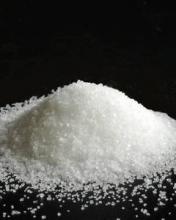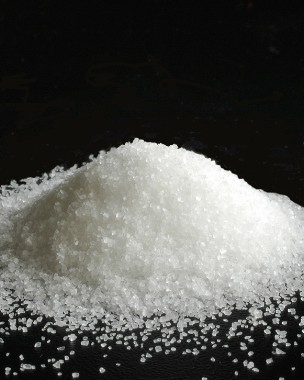User login
OSA linked with poor blood pressure control
BALTIMORE – Resistant hypertension was significantly more prevalent in adults with severe obstructive sleep apnea than in those with moderate OSA, despite the use of multiple antihypertensive medications, based on data from a randomized, controlled trial.
"Strategies to treat sleep apnea in this subgroup should be strongly considered, as improvements in blood pressure could potentially lead to improvements in cardiovascular morbidity and mortality," said Dr. Harneet Walia of the Cleveland Clinic, reporting results of her study at the annual meeting of the Associated Professional Sleep Societies.
Dr. Walia and her colleagues reviewed baseline data from 318 individuals at four sites participating in the HeartBEAT (Heart Biomarker Evaluation in Apnea Treatment) study. The trial randomized patients to receive an educational program about healthy lifestyle and sleep schedules, or the educational program plus either nighttime continuous positive airway pressure or nighttime supplemental oxygen. All patients underwent blood pressure monitoring and completed sleep studies with type III portable monitors.
Of the 318 participants, 73 were taking at least three prescribed antihypertensive medications, including a diuretic. Among these 73 patients, resistant hypertension was noted in 58% of those with severe obstructive sleep apnea and 28% of those with moderate OSA. The adjusted odds ratio for resistant blood pressure in severe OSA was 3.3.
Individuals with blood pressure greater than 170/110 mm Hg were excluded from the study, "so we may have underestimated the effects of sleep apnea," Dr. Walia said.
The average age of the patients was 65 years, approximately 70% were men, and the average apnea-hypopnea index (AHI) was 27. Resistant blood pressure was defined as failure to reach a target below 140/90 mmHg (or 130/80 mmHg for patients with diabetes or chronic kidney disease), despite the use of medication. Approximately half of patients with resistant hypertension met the criteria for severe OSA (AHI of 30 or higher).
"Rigorous trials are needed to assess the effects of sleep apnea treatment on blood pressure control in individuals on intensive antihypertensive regimens," Dr. Walia noted.
The study was funded by the National Heart, Lung, and Blood Institute. Dr. Walia said she had no relevant financial disclosures.
BALTIMORE – Resistant hypertension was significantly more prevalent in adults with severe obstructive sleep apnea than in those with moderate OSA, despite the use of multiple antihypertensive medications, based on data from a randomized, controlled trial.
"Strategies to treat sleep apnea in this subgroup should be strongly considered, as improvements in blood pressure could potentially lead to improvements in cardiovascular morbidity and mortality," said Dr. Harneet Walia of the Cleveland Clinic, reporting results of her study at the annual meeting of the Associated Professional Sleep Societies.
Dr. Walia and her colleagues reviewed baseline data from 318 individuals at four sites participating in the HeartBEAT (Heart Biomarker Evaluation in Apnea Treatment) study. The trial randomized patients to receive an educational program about healthy lifestyle and sleep schedules, or the educational program plus either nighttime continuous positive airway pressure or nighttime supplemental oxygen. All patients underwent blood pressure monitoring and completed sleep studies with type III portable monitors.
Of the 318 participants, 73 were taking at least three prescribed antihypertensive medications, including a diuretic. Among these 73 patients, resistant hypertension was noted in 58% of those with severe obstructive sleep apnea and 28% of those with moderate OSA. The adjusted odds ratio for resistant blood pressure in severe OSA was 3.3.
Individuals with blood pressure greater than 170/110 mm Hg were excluded from the study, "so we may have underestimated the effects of sleep apnea," Dr. Walia said.
The average age of the patients was 65 years, approximately 70% were men, and the average apnea-hypopnea index (AHI) was 27. Resistant blood pressure was defined as failure to reach a target below 140/90 mmHg (or 130/80 mmHg for patients with diabetes or chronic kidney disease), despite the use of medication. Approximately half of patients with resistant hypertension met the criteria for severe OSA (AHI of 30 or higher).
"Rigorous trials are needed to assess the effects of sleep apnea treatment on blood pressure control in individuals on intensive antihypertensive regimens," Dr. Walia noted.
The study was funded by the National Heart, Lung, and Blood Institute. Dr. Walia said she had no relevant financial disclosures.
BALTIMORE – Resistant hypertension was significantly more prevalent in adults with severe obstructive sleep apnea than in those with moderate OSA, despite the use of multiple antihypertensive medications, based on data from a randomized, controlled trial.
"Strategies to treat sleep apnea in this subgroup should be strongly considered, as improvements in blood pressure could potentially lead to improvements in cardiovascular morbidity and mortality," said Dr. Harneet Walia of the Cleveland Clinic, reporting results of her study at the annual meeting of the Associated Professional Sleep Societies.
Dr. Walia and her colleagues reviewed baseline data from 318 individuals at four sites participating in the HeartBEAT (Heart Biomarker Evaluation in Apnea Treatment) study. The trial randomized patients to receive an educational program about healthy lifestyle and sleep schedules, or the educational program plus either nighttime continuous positive airway pressure or nighttime supplemental oxygen. All patients underwent blood pressure monitoring and completed sleep studies with type III portable monitors.
Of the 318 participants, 73 were taking at least three prescribed antihypertensive medications, including a diuretic. Among these 73 patients, resistant hypertension was noted in 58% of those with severe obstructive sleep apnea and 28% of those with moderate OSA. The adjusted odds ratio for resistant blood pressure in severe OSA was 3.3.
Individuals with blood pressure greater than 170/110 mm Hg were excluded from the study, "so we may have underestimated the effects of sleep apnea," Dr. Walia said.
The average age of the patients was 65 years, approximately 70% were men, and the average apnea-hypopnea index (AHI) was 27. Resistant blood pressure was defined as failure to reach a target below 140/90 mmHg (or 130/80 mmHg for patients with diabetes or chronic kidney disease), despite the use of medication. Approximately half of patients with resistant hypertension met the criteria for severe OSA (AHI of 30 or higher).
"Rigorous trials are needed to assess the effects of sleep apnea treatment on blood pressure control in individuals on intensive antihypertensive regimens," Dr. Walia noted.
The study was funded by the National Heart, Lung, and Blood Institute. Dr. Walia said she had no relevant financial disclosures.
AT SLEEP 2013
Doppler ultrasound detected synovitis in clinically inactive JIA
Ultrasonography with power Doppler may be more sensitive than a clinical examination in detecting synovitis among patients with inactive juvenile idiopathic arthritis, according to the results of a Spanish study presented at the annual European Congress of Rheumatology.
The technology could help physicians determine the best course of treatment for these patients.
Using ultrasonography in a group of children with clinically inactive juvenile idiopathic arthritis (JIA), Dr. Paz Collado of Severo Ochoa University Hospital in Madrid and her colleagues at five other hospitals found that 37 of 1,496 (2.5%) joints studied had gray-scale synovial hypertrophy. A total of 18 of the 37 (48%) presented with an increased power Doppler signal, representing synovial hyperemia, a sign of inflammation, said Dr. Collado, a pediatric rheumatologist.
"The current clinical definition of inactive disease, now applied to patients with no clinical symptoms or signs of arthritis activity, could actually mean low disease activity with no functional impairment for some patients," she said in an interview. The technology could be useful in identifying disease persistence before discontinuing treatment but should be a complementary tool, she said. "Clinical history and imaging techniques should be used together to confirm or reject persistent inflammation that could lead to damage in JIA."
Ultrasonography also could be ideal for monitoring therapy, she said.
Dr. Collado and her colleagues studied the prevalence of abnormalities detected by ultrasonography in 34 children with JIA aged 4-16 years. Half of the study patients had attained one or more previous periods of disease inactivity. Twenty-three patients had attained clinical remission with disease-modifying antirheumatic drugs (DMARDs), and 11 patients did so off medication. Investigators performed clinical and ultrasonography assessments blindly on 44 joints in each patient, and used the OMERACT (Outcome Measure in Rheumatology in Clinical Trials) definitions for synovitis and tenosynovitis. They evaluated areas including the shoulder, elbow, wrist, hip, knee, ankle, midfoot, and hands. "Just the presence of a Doppler signal inside the intra-articular synovium or in the synovial sheath was considered as inflammatory activity for our study," the authors said.
The researchers found inflammation more often in some joints, such as knees, ankles, wrists, and the small joints of fingers. "Thirteen (38.2%) patients had evidence of at least one abnormal ultrasound finding; although the number of ultrasound abnormalities detected in patients who achieved remission on DMARDs was higher than in those who achieved remission off medication, there were no significant differences between the two groups in detecting gray-scale synovitis (P = .86), gray-scale tenosynovitis (P = .78), and power Doppler signal (P = .38)," the authors wrote.
"Our study shows that a proportion of patients presenting with clinically inactive disease had gray-scale synovitis, and some of them seem to have had inflammatory activity as detected by power Doppler," said the authors. "The significance of these findings has importance in order to obtain an accurate definition of disease status in the growing skeleton of JIA patients."
Researchers contributing to the study were from Ramón y Cajal University Hospital, La Paz University Hospital, Gregorio Marañón Hospital, and Niño Jesús Hospital, all in Madrid; and Valle de Hebrón University Hospital in Barcelona.
The study was funded by Pfizer. Dr. Collado and her coauthors disclosed receiving grant/research support from the company.
Ultrasonography with power Doppler may be more sensitive than a clinical examination in detecting synovitis among patients with inactive juvenile idiopathic arthritis, according to the results of a Spanish study presented at the annual European Congress of Rheumatology.
The technology could help physicians determine the best course of treatment for these patients.
Using ultrasonography in a group of children with clinically inactive juvenile idiopathic arthritis (JIA), Dr. Paz Collado of Severo Ochoa University Hospital in Madrid and her colleagues at five other hospitals found that 37 of 1,496 (2.5%) joints studied had gray-scale synovial hypertrophy. A total of 18 of the 37 (48%) presented with an increased power Doppler signal, representing synovial hyperemia, a sign of inflammation, said Dr. Collado, a pediatric rheumatologist.
"The current clinical definition of inactive disease, now applied to patients with no clinical symptoms or signs of arthritis activity, could actually mean low disease activity with no functional impairment for some patients," she said in an interview. The technology could be useful in identifying disease persistence before discontinuing treatment but should be a complementary tool, she said. "Clinical history and imaging techniques should be used together to confirm or reject persistent inflammation that could lead to damage in JIA."
Ultrasonography also could be ideal for monitoring therapy, she said.
Dr. Collado and her colleagues studied the prevalence of abnormalities detected by ultrasonography in 34 children with JIA aged 4-16 years. Half of the study patients had attained one or more previous periods of disease inactivity. Twenty-three patients had attained clinical remission with disease-modifying antirheumatic drugs (DMARDs), and 11 patients did so off medication. Investigators performed clinical and ultrasonography assessments blindly on 44 joints in each patient, and used the OMERACT (Outcome Measure in Rheumatology in Clinical Trials) definitions for synovitis and tenosynovitis. They evaluated areas including the shoulder, elbow, wrist, hip, knee, ankle, midfoot, and hands. "Just the presence of a Doppler signal inside the intra-articular synovium or in the synovial sheath was considered as inflammatory activity for our study," the authors said.
The researchers found inflammation more often in some joints, such as knees, ankles, wrists, and the small joints of fingers. "Thirteen (38.2%) patients had evidence of at least one abnormal ultrasound finding; although the number of ultrasound abnormalities detected in patients who achieved remission on DMARDs was higher than in those who achieved remission off medication, there were no significant differences between the two groups in detecting gray-scale synovitis (P = .86), gray-scale tenosynovitis (P = .78), and power Doppler signal (P = .38)," the authors wrote.
"Our study shows that a proportion of patients presenting with clinically inactive disease had gray-scale synovitis, and some of them seem to have had inflammatory activity as detected by power Doppler," said the authors. "The significance of these findings has importance in order to obtain an accurate definition of disease status in the growing skeleton of JIA patients."
Researchers contributing to the study were from Ramón y Cajal University Hospital, La Paz University Hospital, Gregorio Marañón Hospital, and Niño Jesús Hospital, all in Madrid; and Valle de Hebrón University Hospital in Barcelona.
The study was funded by Pfizer. Dr. Collado and her coauthors disclosed receiving grant/research support from the company.
Ultrasonography with power Doppler may be more sensitive than a clinical examination in detecting synovitis among patients with inactive juvenile idiopathic arthritis, according to the results of a Spanish study presented at the annual European Congress of Rheumatology.
The technology could help physicians determine the best course of treatment for these patients.
Using ultrasonography in a group of children with clinically inactive juvenile idiopathic arthritis (JIA), Dr. Paz Collado of Severo Ochoa University Hospital in Madrid and her colleagues at five other hospitals found that 37 of 1,496 (2.5%) joints studied had gray-scale synovial hypertrophy. A total of 18 of the 37 (48%) presented with an increased power Doppler signal, representing synovial hyperemia, a sign of inflammation, said Dr. Collado, a pediatric rheumatologist.
"The current clinical definition of inactive disease, now applied to patients with no clinical symptoms or signs of arthritis activity, could actually mean low disease activity with no functional impairment for some patients," she said in an interview. The technology could be useful in identifying disease persistence before discontinuing treatment but should be a complementary tool, she said. "Clinical history and imaging techniques should be used together to confirm or reject persistent inflammation that could lead to damage in JIA."
Ultrasonography also could be ideal for monitoring therapy, she said.
Dr. Collado and her colleagues studied the prevalence of abnormalities detected by ultrasonography in 34 children with JIA aged 4-16 years. Half of the study patients had attained one or more previous periods of disease inactivity. Twenty-three patients had attained clinical remission with disease-modifying antirheumatic drugs (DMARDs), and 11 patients did so off medication. Investigators performed clinical and ultrasonography assessments blindly on 44 joints in each patient, and used the OMERACT (Outcome Measure in Rheumatology in Clinical Trials) definitions for synovitis and tenosynovitis. They evaluated areas including the shoulder, elbow, wrist, hip, knee, ankle, midfoot, and hands. "Just the presence of a Doppler signal inside the intra-articular synovium or in the synovial sheath was considered as inflammatory activity for our study," the authors said.
The researchers found inflammation more often in some joints, such as knees, ankles, wrists, and the small joints of fingers. "Thirteen (38.2%) patients had evidence of at least one abnormal ultrasound finding; although the number of ultrasound abnormalities detected in patients who achieved remission on DMARDs was higher than in those who achieved remission off medication, there were no significant differences between the two groups in detecting gray-scale synovitis (P = .86), gray-scale tenosynovitis (P = .78), and power Doppler signal (P = .38)," the authors wrote.
"Our study shows that a proportion of patients presenting with clinically inactive disease had gray-scale synovitis, and some of them seem to have had inflammatory activity as detected by power Doppler," said the authors. "The significance of these findings has importance in order to obtain an accurate definition of disease status in the growing skeleton of JIA patients."
Researchers contributing to the study were from Ramón y Cajal University Hospital, La Paz University Hospital, Gregorio Marañón Hospital, and Niño Jesús Hospital, all in Madrid; and Valle de Hebrón University Hospital in Barcelona.
The study was funded by Pfizer. Dr. Collado and her coauthors disclosed receiving grant/research support from the company.
FROM THE EULAR CONGRESS 2013
IOM: Cut daily sodium, but not below 2,300 mg
Americans should lower sodium consumption to optimize their health – but not below levels of 2,300 mg per day, according to a new report from the Institute of Medicine.
People aged 51 years and older, African-Americans, and those with hypertension, diabetes, or chronic kidney disease can follow the same advice, according to authors of the report, released during a webinar May 14.
That recommendation is a departure from the current Dietary Guidelines for Americans from the U.S. Department of Health and Human Services, which recommends that these higher-risk groups limit sodium intake to 1,500 mg daily. The HHS guidelines recommend that most other people aged 14-50 years limit sodium intake to 2,300 mg per day.
On average, Americans consume 3,400 mg or more of sodium a day (equivalent to 1.5 teaspoons of salt), despite efforts over the past few decades to reduce sodium consumption, according to the IOM report, which was sponsored by the Centers for Disease Control and Prevention.
"We found no consistent evidence to support an association between sodium intake and either a beneficial or adverse effect on most direct health outcomes," said Dr. Brian L. Strom, George S. Pepper Professor of Public Health and Preventive Medicine at the University of Pennsylvania, Philadelphia, who chaired the committee that released the report.
The committee did not suggest an optimal target range for sodium consumption.
Dr. Strom and his colleagues reviewed medical studies from 2003 to 2012 that evaluated the direct impact of sodium intake on outcomes such as heart disease and death. Although the studies varied widely in the quality of their methodology and data collection, the report’s authors came to the following conclusions:
• There was a positive relationship between higher levels of sodium and risk of heart disease, consistent with previous research looking at sodium’s effects on blood pressure.
• There were insufficient data to determine if lowering sodium intake below 2,300 mg/day conferred any increase or decrease in the risk of heart disease, stroke, or death.
• Sodium intake of 1,840 mg/day or less may increase the risk of adverse health effects such as cardiovascular events or death among people with mid- to late-stage heart failure receiving aggressive treatment.
• Health outcomes studies provide little evidence about the effects of low sodium intake among those with diabetes, kidney disease, and heart disease, suggesting that people affected by these conditions could follow recommendations for the general public.
But the recommendations prompted calls for caution by some health experts.
The IOM report included "weak studies with numerous problems" and did not include evidence on the effects of sodium reduction on blood pressure, "a key determinant of health and the largest determinant of preventable mortality worldwide," Dr. Lawrence Appel, director of the Welch Center for Prevention, Epidemiology, and Clinical Research at Johns Hopkins University, Baltimore, said in an interview.
Dr. Appel said he still supports the recommendations of the Dietary Guidelines, which he helped create. "Middle- and older-aged adults, African Americans, and patients with hypertension, diabetes, and chronic kidney disease are those at greatest risk for blood pressure–related heart disease and stroke," he said, and they stand to benefit from keeping sodium levels to 1,500 mg/day or less.
Americans should lower sodium consumption to optimize their health – but not below levels of 2,300 mg per day, according to a new report from the Institute of Medicine.
People aged 51 years and older, African-Americans, and those with hypertension, diabetes, or chronic kidney disease can follow the same advice, according to authors of the report, released during a webinar May 14.
That recommendation is a departure from the current Dietary Guidelines for Americans from the U.S. Department of Health and Human Services, which recommends that these higher-risk groups limit sodium intake to 1,500 mg daily. The HHS guidelines recommend that most other people aged 14-50 years limit sodium intake to 2,300 mg per day.
On average, Americans consume 3,400 mg or more of sodium a day (equivalent to 1.5 teaspoons of salt), despite efforts over the past few decades to reduce sodium consumption, according to the IOM report, which was sponsored by the Centers for Disease Control and Prevention.
"We found no consistent evidence to support an association between sodium intake and either a beneficial or adverse effect on most direct health outcomes," said Dr. Brian L. Strom, George S. Pepper Professor of Public Health and Preventive Medicine at the University of Pennsylvania, Philadelphia, who chaired the committee that released the report.
The committee did not suggest an optimal target range for sodium consumption.
Dr. Strom and his colleagues reviewed medical studies from 2003 to 2012 that evaluated the direct impact of sodium intake on outcomes such as heart disease and death. Although the studies varied widely in the quality of their methodology and data collection, the report’s authors came to the following conclusions:
• There was a positive relationship between higher levels of sodium and risk of heart disease, consistent with previous research looking at sodium’s effects on blood pressure.
• There were insufficient data to determine if lowering sodium intake below 2,300 mg/day conferred any increase or decrease in the risk of heart disease, stroke, or death.
• Sodium intake of 1,840 mg/day or less may increase the risk of adverse health effects such as cardiovascular events or death among people with mid- to late-stage heart failure receiving aggressive treatment.
• Health outcomes studies provide little evidence about the effects of low sodium intake among those with diabetes, kidney disease, and heart disease, suggesting that people affected by these conditions could follow recommendations for the general public.
But the recommendations prompted calls for caution by some health experts.
The IOM report included "weak studies with numerous problems" and did not include evidence on the effects of sodium reduction on blood pressure, "a key determinant of health and the largest determinant of preventable mortality worldwide," Dr. Lawrence Appel, director of the Welch Center for Prevention, Epidemiology, and Clinical Research at Johns Hopkins University, Baltimore, said in an interview.
Dr. Appel said he still supports the recommendations of the Dietary Guidelines, which he helped create. "Middle- and older-aged adults, African Americans, and patients with hypertension, diabetes, and chronic kidney disease are those at greatest risk for blood pressure–related heart disease and stroke," he said, and they stand to benefit from keeping sodium levels to 1,500 mg/day or less.
Americans should lower sodium consumption to optimize their health – but not below levels of 2,300 mg per day, according to a new report from the Institute of Medicine.
People aged 51 years and older, African-Americans, and those with hypertension, diabetes, or chronic kidney disease can follow the same advice, according to authors of the report, released during a webinar May 14.
That recommendation is a departure from the current Dietary Guidelines for Americans from the U.S. Department of Health and Human Services, which recommends that these higher-risk groups limit sodium intake to 1,500 mg daily. The HHS guidelines recommend that most other people aged 14-50 years limit sodium intake to 2,300 mg per day.
On average, Americans consume 3,400 mg or more of sodium a day (equivalent to 1.5 teaspoons of salt), despite efforts over the past few decades to reduce sodium consumption, according to the IOM report, which was sponsored by the Centers for Disease Control and Prevention.
"We found no consistent evidence to support an association between sodium intake and either a beneficial or adverse effect on most direct health outcomes," said Dr. Brian L. Strom, George S. Pepper Professor of Public Health and Preventive Medicine at the University of Pennsylvania, Philadelphia, who chaired the committee that released the report.
The committee did not suggest an optimal target range for sodium consumption.
Dr. Strom and his colleagues reviewed medical studies from 2003 to 2012 that evaluated the direct impact of sodium intake on outcomes such as heart disease and death. Although the studies varied widely in the quality of their methodology and data collection, the report’s authors came to the following conclusions:
• There was a positive relationship between higher levels of sodium and risk of heart disease, consistent with previous research looking at sodium’s effects on blood pressure.
• There were insufficient data to determine if lowering sodium intake below 2,300 mg/day conferred any increase or decrease in the risk of heart disease, stroke, or death.
• Sodium intake of 1,840 mg/day or less may increase the risk of adverse health effects such as cardiovascular events or death among people with mid- to late-stage heart failure receiving aggressive treatment.
• Health outcomes studies provide little evidence about the effects of low sodium intake among those with diabetes, kidney disease, and heart disease, suggesting that people affected by these conditions could follow recommendations for the general public.
But the recommendations prompted calls for caution by some health experts.
The IOM report included "weak studies with numerous problems" and did not include evidence on the effects of sodium reduction on blood pressure, "a key determinant of health and the largest determinant of preventable mortality worldwide," Dr. Lawrence Appel, director of the Welch Center for Prevention, Epidemiology, and Clinical Research at Johns Hopkins University, Baltimore, said in an interview.
Dr. Appel said he still supports the recommendations of the Dietary Guidelines, which he helped create. "Middle- and older-aged adults, African Americans, and patients with hypertension, diabetes, and chronic kidney disease are those at greatest risk for blood pressure–related heart disease and stroke," he said, and they stand to benefit from keeping sodium levels to 1,500 mg/day or less.
Switching anti-TNF drugs of little benefit in psoriatic arthritis
Most patients with psoriatic arthritis fare better when remaining on a single tumor necrosis factor inhibitor than when switching to a second medication, Norwegian researchers have found.
Karen Fagerli, Ph.D., of the department of rheumatology at Diakonhjemmet Hospital in Oslo, and her colleagues found that patients who switched tumor necrosis factor inhibitor (TNFi) medications had significantly poorer responses in factors like American College of Rheumatology-50 (ACR 50) response and Disease Activity Score-28 (DAS28) remission, compared with those who stayed on one TNFi. Drug-survival rates at 3 years also were lower among patients who changed medications (Ann. Rheum. Dis. 2013 April 5 [doi: 10.1136/annrheumdis-2012-203018]).
Because some (20%-40%) patients showed a response to a second TNFi at 3 months, "our results do not imply that a second TNFi should not be attempted in those who fail their first TNFi, but rather highlight the need for treatments with other mechanisms of action for patients with psoriatic arthritis," Dr. Fagerli and her colleagues wrote.
The investigators studied patient data from the observational NOR-DMARD study, a registry at five centers in Norway of all patients with inflammatory arthropathies starting disease-modifying antirheumatic drugs (DMARDs). Patients in the registry were assessed at baseline and 3, 6, and 12 months after starting treatment. They had annual follow-up visits thereafter.
The researchers included 439 patients with psoriatic arthritis who started their first TNFi between February 2001 and October 2011. They labeled the 95 patients who started a second TNFi as the "switchers," and the remaining 344 patients who stayed on one TNFi as the "nonswitchers." Researchers compared 3-month responses and 3-year drug-survival between switchers and nonswitchers, and within switchers. Among switchers, etanercept (Enbrel) was the most commonly prescribed first TNFi, and adalimumab (Humira) the most commonly prescribed second TNFi.
The switchers receiving their second TNFi had significantly poorer responses by 3 months than the nonswitchers: The ACR 50 response was 22.5% in switchers taking a second TNFi, versus 40% in nonswitchers, and DAS28 remission rates were 28% in switchers taking a second TNFi, versus 54% in nonswitchers.
Researchers also found a trend among the switchers toward poorer responses to the second TNFi, compared with the first. "The estimated 3-year drug-survival was 36% for the second TNFi, compared with 57% for the first TNFi overall," they wrote.
The investigators noted that the comparisons between switchers and nonswitchers could be biased by "some patients still having residual effects of their first TNFi when starting the second, ... but the pattern of poorer response to the second TNFi was consistent for both analytic approaches."
Even though the approach to evaluating effectiveness through the assessment of treatment completers "likely overestimates effectiveness due to discontinuations prior to assessment in poor responders," there was only a small difference in the rate of discontinuation prior to the 3-month assessment between the switchers, who had the poorest response, and the nonswitchers, the investigators said.
The study was supported by the Norwegian South Eastern Health Board. The NOR-DMARD study received funding from Abbott, Amgen, and other companies. Dr. Fagerli reported having received speaker’s honoraria from Abbott and Pfizer. Other authors reported financial ties to manufacturers of TNF inhibitors and other biologics.
Most patients with psoriatic arthritis fare better when remaining on a single tumor necrosis factor inhibitor than when switching to a second medication, Norwegian researchers have found.
Karen Fagerli, Ph.D., of the department of rheumatology at Diakonhjemmet Hospital in Oslo, and her colleagues found that patients who switched tumor necrosis factor inhibitor (TNFi) medications had significantly poorer responses in factors like American College of Rheumatology-50 (ACR 50) response and Disease Activity Score-28 (DAS28) remission, compared with those who stayed on one TNFi. Drug-survival rates at 3 years also were lower among patients who changed medications (Ann. Rheum. Dis. 2013 April 5 [doi: 10.1136/annrheumdis-2012-203018]).
Because some (20%-40%) patients showed a response to a second TNFi at 3 months, "our results do not imply that a second TNFi should not be attempted in those who fail their first TNFi, but rather highlight the need for treatments with other mechanisms of action for patients with psoriatic arthritis," Dr. Fagerli and her colleagues wrote.
The investigators studied patient data from the observational NOR-DMARD study, a registry at five centers in Norway of all patients with inflammatory arthropathies starting disease-modifying antirheumatic drugs (DMARDs). Patients in the registry were assessed at baseline and 3, 6, and 12 months after starting treatment. They had annual follow-up visits thereafter.
The researchers included 439 patients with psoriatic arthritis who started their first TNFi between February 2001 and October 2011. They labeled the 95 patients who started a second TNFi as the "switchers," and the remaining 344 patients who stayed on one TNFi as the "nonswitchers." Researchers compared 3-month responses and 3-year drug-survival between switchers and nonswitchers, and within switchers. Among switchers, etanercept (Enbrel) was the most commonly prescribed first TNFi, and adalimumab (Humira) the most commonly prescribed second TNFi.
The switchers receiving their second TNFi had significantly poorer responses by 3 months than the nonswitchers: The ACR 50 response was 22.5% in switchers taking a second TNFi, versus 40% in nonswitchers, and DAS28 remission rates were 28% in switchers taking a second TNFi, versus 54% in nonswitchers.
Researchers also found a trend among the switchers toward poorer responses to the second TNFi, compared with the first. "The estimated 3-year drug-survival was 36% for the second TNFi, compared with 57% for the first TNFi overall," they wrote.
The investigators noted that the comparisons between switchers and nonswitchers could be biased by "some patients still having residual effects of their first TNFi when starting the second, ... but the pattern of poorer response to the second TNFi was consistent for both analytic approaches."
Even though the approach to evaluating effectiveness through the assessment of treatment completers "likely overestimates effectiveness due to discontinuations prior to assessment in poor responders," there was only a small difference in the rate of discontinuation prior to the 3-month assessment between the switchers, who had the poorest response, and the nonswitchers, the investigators said.
The study was supported by the Norwegian South Eastern Health Board. The NOR-DMARD study received funding from Abbott, Amgen, and other companies. Dr. Fagerli reported having received speaker’s honoraria from Abbott and Pfizer. Other authors reported financial ties to manufacturers of TNF inhibitors and other biologics.
Most patients with psoriatic arthritis fare better when remaining on a single tumor necrosis factor inhibitor than when switching to a second medication, Norwegian researchers have found.
Karen Fagerli, Ph.D., of the department of rheumatology at Diakonhjemmet Hospital in Oslo, and her colleagues found that patients who switched tumor necrosis factor inhibitor (TNFi) medications had significantly poorer responses in factors like American College of Rheumatology-50 (ACR 50) response and Disease Activity Score-28 (DAS28) remission, compared with those who stayed on one TNFi. Drug-survival rates at 3 years also were lower among patients who changed medications (Ann. Rheum. Dis. 2013 April 5 [doi: 10.1136/annrheumdis-2012-203018]).
Because some (20%-40%) patients showed a response to a second TNFi at 3 months, "our results do not imply that a second TNFi should not be attempted in those who fail their first TNFi, but rather highlight the need for treatments with other mechanisms of action for patients with psoriatic arthritis," Dr. Fagerli and her colleagues wrote.
The investigators studied patient data from the observational NOR-DMARD study, a registry at five centers in Norway of all patients with inflammatory arthropathies starting disease-modifying antirheumatic drugs (DMARDs). Patients in the registry were assessed at baseline and 3, 6, and 12 months after starting treatment. They had annual follow-up visits thereafter.
The researchers included 439 patients with psoriatic arthritis who started their first TNFi between February 2001 and October 2011. They labeled the 95 patients who started a second TNFi as the "switchers," and the remaining 344 patients who stayed on one TNFi as the "nonswitchers." Researchers compared 3-month responses and 3-year drug-survival between switchers and nonswitchers, and within switchers. Among switchers, etanercept (Enbrel) was the most commonly prescribed first TNFi, and adalimumab (Humira) the most commonly prescribed second TNFi.
The switchers receiving their second TNFi had significantly poorer responses by 3 months than the nonswitchers: The ACR 50 response was 22.5% in switchers taking a second TNFi, versus 40% in nonswitchers, and DAS28 remission rates were 28% in switchers taking a second TNFi, versus 54% in nonswitchers.
Researchers also found a trend among the switchers toward poorer responses to the second TNFi, compared with the first. "The estimated 3-year drug-survival was 36% for the second TNFi, compared with 57% for the first TNFi overall," they wrote.
The investigators noted that the comparisons between switchers and nonswitchers could be biased by "some patients still having residual effects of their first TNFi when starting the second, ... but the pattern of poorer response to the second TNFi was consistent for both analytic approaches."
Even though the approach to evaluating effectiveness through the assessment of treatment completers "likely overestimates effectiveness due to discontinuations prior to assessment in poor responders," there was only a small difference in the rate of discontinuation prior to the 3-month assessment between the switchers, who had the poorest response, and the nonswitchers, the investigators said.
The study was supported by the Norwegian South Eastern Health Board. The NOR-DMARD study received funding from Abbott, Amgen, and other companies. Dr. Fagerli reported having received speaker’s honoraria from Abbott and Pfizer. Other authors reported financial ties to manufacturers of TNF inhibitors and other biologics.
FROM ANNALS OF THE RHEUMATIC DISEASES
Major finding: The ACR 50 response was 22.5% in switchers taking a second TNFi, versus 40% in nonswitchers, and DAS28 remission rates were 28% in switchers taking a second TNFi, versus 54% in nonswitchers.
Data source: An observational cohort study of 439 patients with psoriatic arthritis enrolled in registries at five centers in Norway during February-October 2011.
Disclosures: The study was supported by the Norwegian South Eastern Health Board. The NOR-DMARD study received funding from Abbott, Amgen, and other companies. Dr. Fagerli reported having received speaker’s honoraria from Abbott and Pfizer. Other authors reported financial ties to manufacturers of TNF inhibitors and other biologics.





